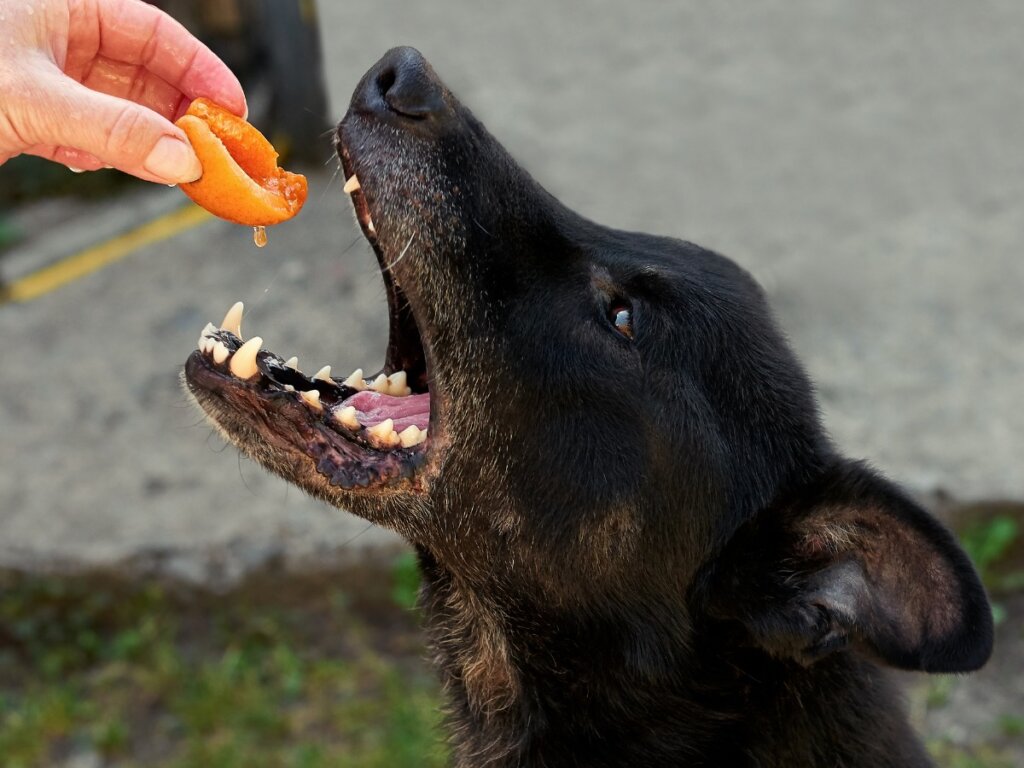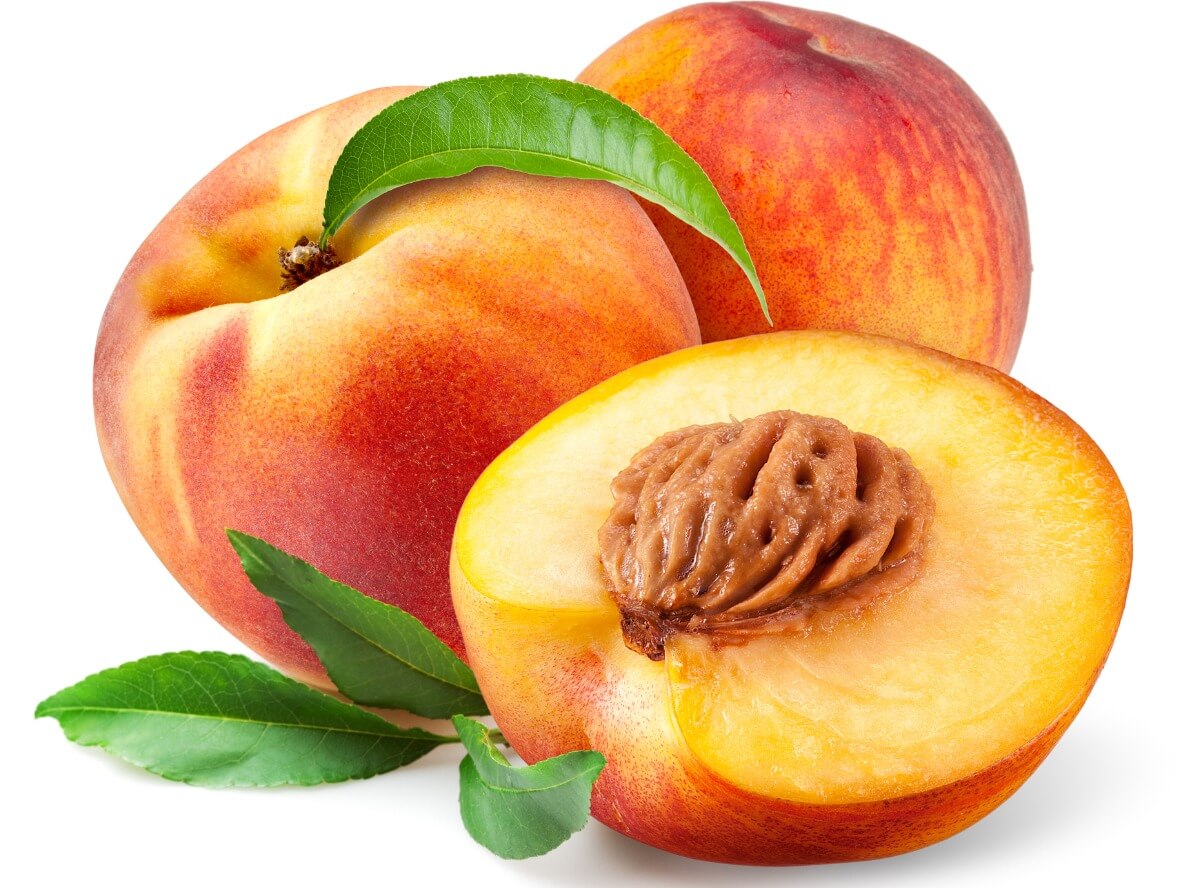Can Dogs Eat Peaches?
Like all fruits and vegetables, peaches can have a number of benefits for your dog. However, some of its parts can be toxic.

Peaches are one of those fruits that we may be unsure about whether we can give it to our dogs. In general, healthy snacks – including fruits – should make up 10% of a dog’s daily calorie intake. However, peaches have a little “dark side” that should be avoided so as not to affect your pet’s health. So, can dogs eat peaches?
It’s important to note that no fruit or vegetable fulfills the function that their main daily food does. These should only be considered as a healthy snack for your pet, and, depending on the fruit and the dog’s health, you can decide how much you can give them.
Can dogs eat peaches?
It’s common to hear questions about whether we should offer fruit. In the case of peaches, they provide different benefits for dogs in the field of health and food. This is possible thanks to its high fiber content, as well as a percentage of vitamins A, C and E, as well as minerals such as potassium, copper, and magnesium.
All these elements help improve the digestive system of dogs. In addition to that, despite their carnivorous nature, dogs enjoy the flavor and texture of many fruits and vegetables. However, peaches also contain sugar, and so you should consider it only as a sporadic treat and not as a nutritional supplement in the pet’s diet.
One tablespoon of peach pulp contains 1.53 micrograms of vitamin A and 0.625 milligrams of vitamin C.

Benefits of peaches for dogs
Beyond vitamins and nutritional content, according to a study published in the International Journal of Molecular Sciences, peaches contain a high percentage of natural phytonutrients, flavonoids, and antioxidants. In them, there are many catechins and chlorogenic acid, elements that help prevent chronic or cardiovascular diseases in canines.
Thanks to the different minerals and vitamins mentioned above, the peach ensures a much stronger immune system against common diseases, such as colds in dogs. Other benefits of peaches for dogs are the following:
- Improves some digestive problems: Being an alkaline fruit, peaches can help control the pH of the dog’s fluids. For this reason, it improves the elimination of some digestive problems, such as indigestion, constipation, or gastritis.
- Improves circulation: Dogs that eat peaches have a lower risk of having fat in their arteries or suffering a heart attack.
- Promotes weight loss: In 100 grams (10 oz) of peaches, there are 57 calories, making it the ideal fruit for dogs who are overweight.
- Prevents diabetes and cognitive dysfunction: A study published in the journal Molecules states that the chlorogenic acid present in peaches helps fight the effects of diabetes in animals, such as wound healing and lipid metabolism. Similarly, epigallocatechin gallate helps prevent cognitive dysfunction in pets.
Peach risks for dogs
Although the fruit itself is safe for the dog when offered responsibly, some elements of the peach should be avoided. First of all, it’s advisable not to give the dog the peach with its shell or outer skin. In this way, allergic reactions in dogs can be avoided.
Similarly, it’s recommended that you don’t give a whole peach to the dog. This prevents possible cases of choking on the stone of the fruit and reduces the chances of poisoning. There’s a toxic compound found in peach kernels, which is rich in sugar and produces cyanide, so a dog could be affected if they consume it in large quantities.
If you have a peach tree, it’s important to prevent the dog going near it, because the stems and leaves contain amygdalin.
Finally, if you want to reward a dog with a peach, it’s preferable to use only organic fruit. Avoid canned peaches, preserves, or jams, as only then will you ensure that the dog doesn’t consume the additional sugar in this format. Likewise, peaches shouldn’t be offered to dogs with any form of diabetes.
How to offer peach to a dog safely
Considering the benefits and possible risks of offering peach to your dog, the next thing to think about is how to do it. The first thing is to consider the appropriate doses for the dog, as offering it in large quantities would cause diarrhea and an upset stomach as a result of the large amount of fiber. Here are some ways to safely offer peach to a dog.
- Raw peach: The healthiest and most practical way is to remove the peel from the fruit and cut the peach into small slices or squares. The portion is then offered directly to the dog, without abusing the quantity. The ideal amount is around 1 or 2 peaches every 15 days.
- Oatmeal peaches: This recipe is pretty simple and eye-catching for dogs. You only need to cut the peach into small squares with a tablespoon of oatmeal, and if desired, add a teaspoon of peanut butter.
- Peach ice cream: For this recipe, you need to cut one or two peaches into squares and stir it with a little water and Greek yogurt. Subsequently, the mixture is put into ice cream containers and placed in the freezer. In this way, the dog will have a different way of cooling off in summer.

As with the rest of fruits and vegetables, the important thing is not to abuse how much peach you give your dog. As you can see, this fruit provides several benefits. In addition, as long as the shell and seed are removed, it doesn’t pose a danger to the canine. In the right doses, the peach will help prevent certain diseases and slow the development of more complex ones.

